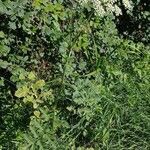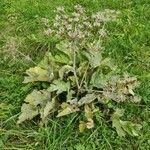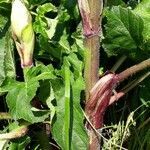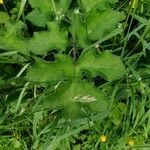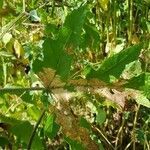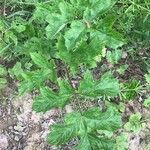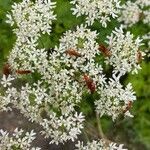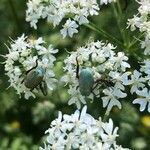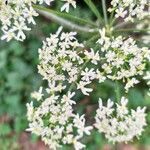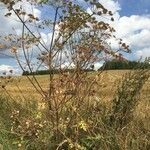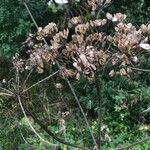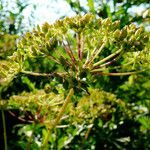A fairly robust bristly herb. It can take 2 years to complete its life-cycle or grow for several years. It grows 2.5 m tall. The stems are hollow and ridged. The leaves are large and have leaflets along the stalk. These often have 5 lobed segments which have teeth. The upper leaves are smaller. The bases are inflated and flat and wrap around the developing flower. The flower umbel is large and flat. It can be 15 cm across. It is white or pink with 15-45 rays. The petals of the outer flowers are unequal and have notches. The fruit can be rounded or oval and 7-10 mm long. They are flattened and have broad wings.
Lvs pinnate with mostly 5(–9) toothed (and often also cleft) segments; bracts few or none; otherwise much like no. 1 [Heracleum lanatum Michx.], but the lf-segments often smaller and the umbel sometimes with as many as 45 rays; 2n=22. Native of Eurasia, casually intr. in waste places from Nf. to N.Y.
